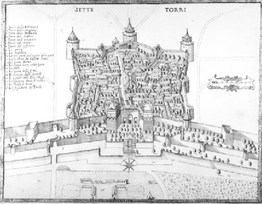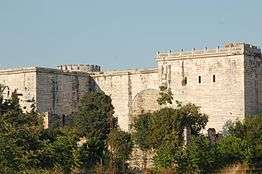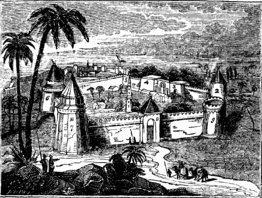Osman II
| Osman II | |||||
|---|---|---|---|---|---|
|
Caliph of Islam Amir al-Mu'minin Sultan of the Ottoman Empire Custodian of the Two Holy Mosques | |||||
 | |||||
| 16th Ottoman Sultan (Emperor) | |||||
| Reign | 26 February 1618 – 20 May 1622 | ||||
| Predecessor | Mustafa I | ||||
| Successor | Mustafa I | ||||
| Born |
November 3, 1604 Topkapi Palace, Constantinople, Ottoman Empire | ||||
| Died |
May 20, 1622 (aged 17) Yedikule Fortress, Constantinople, Ottoman Empire | ||||
| Consorts |
Akile Hatun (Legal wife) Meylişah Hatun Ayşe Hatun | ||||
| Issue |
Şehzade Ömer Zeynep Sultan Şehzâde Mustafa | ||||
| |||||
| Dynasty | House of Osman | ||||
| Father | Ahmed I | ||||
| Mother | Mahfiruz Hatice Sultan | ||||
| Religion | Sunni Islam | ||||
| Tughra |
| ||||
Osman II (Ottoman Turkish: عثمان ثانى ‘Osmān-i sānī; November 3, 1604 – May 20, 1622), commonly known in Turkey as Genç Osman ("Osman the Young" in English), was the Sultan of the Ottoman Empire from 1618 until his death by regicide on 20 May 1622.
Early life

Osman II was born at Topkapı Palace, Constantinople, the son of Sultan Ahmed I (1603–17) and his first wife Mahfiruz Hatice Sultan, according to some sources either a Greek[1] or Evdoksiya, a Serbian.[2] According to later traditions, at a young age, his mother had paid a great deal of attention to Osman's education, as a result of which Osman II became a known poet and would have mastered many languages, including Arabic, Persian, Greek, Latin, and Italian; this has been refuted since.[3]
Osman's failure to capture the throne at the death of his father Ahmed may have been caused by the absence of a mother to lobby in his favor, his mother being possibly in exile in Edirne or already dead.
Reign
He ascended the throne at the early age of 14 as the result of a coup d'état against his uncle Mustafa I "the Intestable" (1617–18, 1622–23). Despite his youth, Osman II soon sought to assert himself as a ruler, and after securing the empire's eastern border by signing a peace treaty (Treaty of Serav) with Safavid Persia, he personally led the Ottoman invasion of Poland during the Moldavian Magnate Wars. Forced to sign a peace treaty with the Poles after the Battle of Chotin (Chocim) (which was, in fact, a siege of Chotin defended by the Lithuanian-Polish hetman Jan Karol Chodkiewicz) in September–October, 1621, Osman II returned home to Constantinople in shame, blaming the cowardice of the Janissaries and the insufficiency of his statesmen for his humiliation.
The basic and exceptional weakness from which Osman II suffered was the conspious absence of a female power basis in the harem. From 1620 until Osman's death, a governess (daye hatun, lit. wet-nurse) was appointed as a stand-in valide, and she could not counterbalance the contriving of Mustafa I's mother in the Old Palace. Although he did have a loyal chief black eunuch at his side, this could not compensate for the absence of what in the politics of that period was a winning combination, valide sultan–chief black eununch, especially in the case of a young and very ambitious ruler.[4] According to Piterberg, Osman II did not have haseki sultan, opposite with Peirce who claim that Ayşe was Osman's haseki. But it is clear that Ayşe could not took valide's role during her spouse's reign.
Death



Katip Çelebi witnessed the murder of Osman II in person, and presented the most complete account of this event in his famous book Fezleke in the chapter titled "Sultan Osman II at the Central Mosque (Orta Camii)", written in Ottoman Turkish.[5]
Seeking a counterweight to Janissary influence, Osman II closed their coffee shops (the gathering points for conspiracies against the throne) and started planning to create a new and more loyal army consisting of Anatolian sekbans. The result was a palace uprising by the Janissaries, who promptly imprisoned the young sultan. When an executioner was sent to strangle him at Yedikule Fortress in Istanbul, Osman II refused to give in and began fighting the man and was only subdued when he was hit on his back with the rear end of an axe by one of his imprisoners. After that he was strangled.
Family
- Consorts
- Ayşe Sultan, his haseki, of unknown background.
- Akile Hatun, daughter of Şeyhülislam Esad Efendi.
- Meylişah Hatun, originally a Serb named Marica.
- Sons
- Şehzade Ömer (20 October 1621 – January 1622), son of Meylişah Hatun.
- Şehzade Mustafa (posthumously November 1622 – 1654), twin with Zeynep Sultan; by Akile Hatun.
- Daughter
- Zeynep Sultan (posthumously November 1622 – 1703), twin with Şehzade Mustafa; by Akile Hatun.
See also
Notes
- ↑ Shaw, Stanford Jay. History of the Ottoman Empire and Modern Turkey, volume I: Empire of the Gazis: The Rise and Decline of the Ottoman Empire, 1280-1808. Cambridge University Press. p. 191.
- ↑ Günseli İnal; Semiramis Arşivi (2005). Semiramis: Sultan'ın gözünden şenlik. YKY. p. 27. ISBN 978-975-08-0928-6.
[Osman II's mother the Serbian Evdoksiya known as Mahfiruz Sultan]
- ↑ Tezcan, Baki (2002). "The 1622 Military Rebellion in Istanbul : A Historiographical Journey". International Journal of Turkish Studies. University of Wisconsin: 40.
Stanford Shaw, the author of an Ottoman history that has been widely used as a textbook and reference work, claims, on the basis of information from an eighteenth-century French novel,84 that the sultan was "[t]rained in Latin, Greek, and Italian by his Greek mother, as well as Ottoman Turkish, Arabic, and Persian."85
- ↑ Piterberg, Gabriel (2003). An Ottoman Tragedy: History and Historiography at Play. California: University of California Press. p. 18. ISBN 0-520-23836-2.
- ↑ Ahmet Refik, Kâtip Çelebi, Kanaat Kütüphanesi Publications, pages 41-42, 1932.
External links
![]() Media related to Osman II at Wikimedia Commons
Media related to Osman II at Wikimedia Commons
| Osman II Born: November 3, 1604 Died: May 20, 1622 | ||
| Regnal titles | ||
|---|---|---|
| Preceded by Mustafa I |
 Sultan of the Ottoman Empire Feb 26, 1618 – May 20, 1622 |
Succeeded by Mustafa I |
| Sunni Islam titles | ||
| Preceded by Mustafa I |
Caliph of Islam Ottoman Caliph Feb 26, 1618 – May 20, 1622 |
Succeeded by Mustafa I |